Detroit’s history of innovation thrives again in its tech sector. The restoration of Ford’s Michigan Central Station fuels this growth. This new era capitalizes on the city’s determined spirit, forging a path for continued progress.
KORTX, a homegrown integrated advertising company, has become a leading force in the city’s advertising scene. We are fueled by the same spirit that drives the ongoing transformation of Detroit and Ford’s Michigan Central Station.
Michigan Central Station: The Detroit Spirit That Never Left
Picture it: 1920s Detroit.
The streets hummed with the rumble of Model Ts and the clang of trolley cars, the air thick with the exhaust of industry and ambition. Art Deco skyscrapers lined the streets, factories churned out automobiles, and immigrants from all corners of the globe poured into the city in waves, pursuing a chance to build a better life.
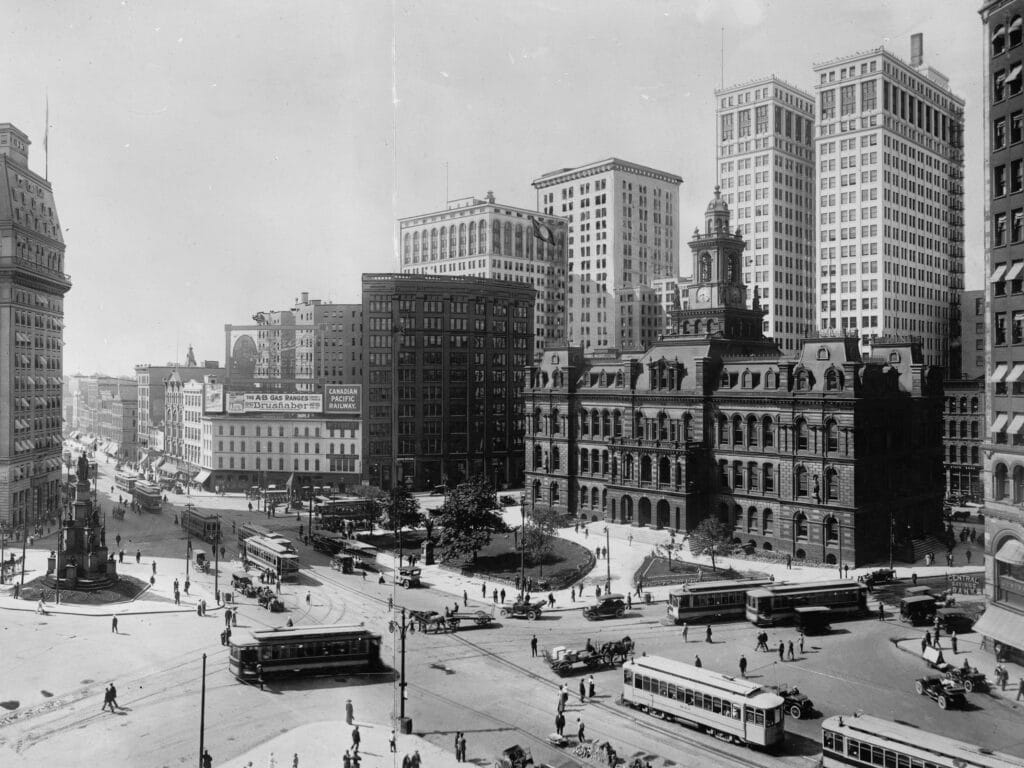
Sometime between 1910-1920 in Detroit, courtesy of the Library of Congress Archive.
Built in 1913 to accommodate the growing rail traffic from the Detroit-Windsor tunnel and the increasing passenger demand, Michigan Central Station was the city’s primary railway hub, the “Gateway of the City,” until 1988.
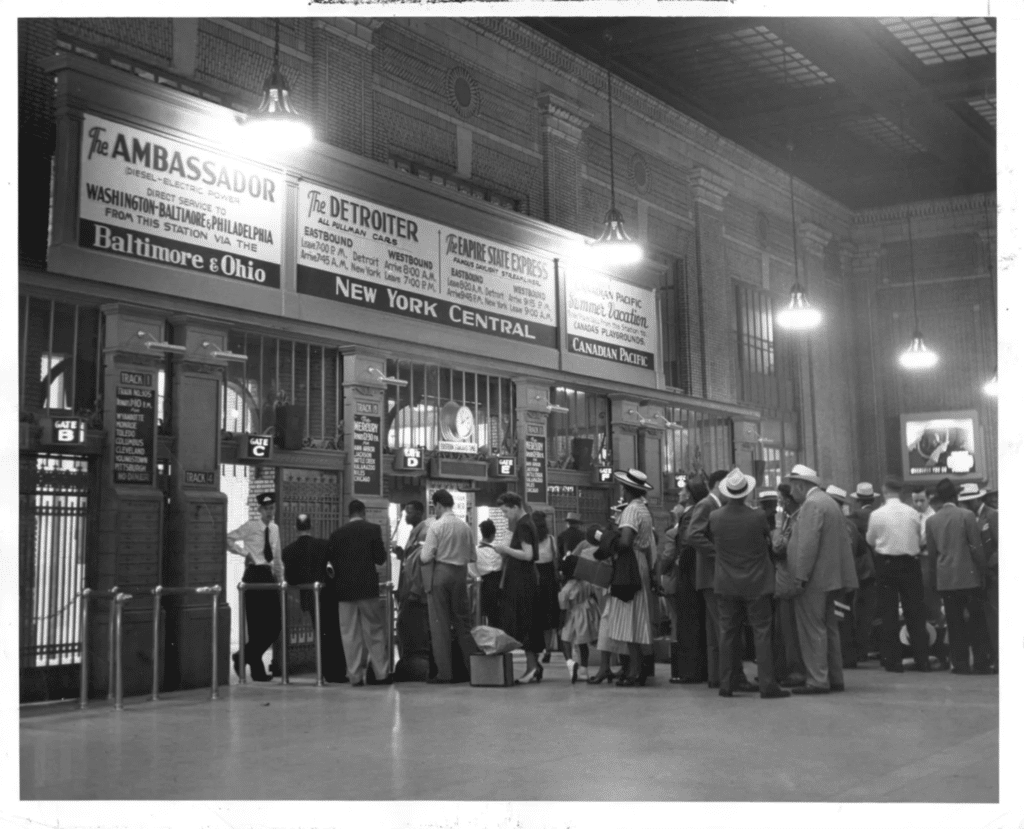
A view of travelers waiting in line at gates inside Michigan Central Railroad Station, Norman H. Hammerl, Burton Historical Collection.
The Building of Michigan Central
A fire destroyed the first station in its original location near the Detroit River and Third Street. The new location in Corktown was redesigned by renowned New York hotel architects Whitney Warren and Charles D. Wetmore, along with Charles A. Reed and Allen Stem, designers of New York City’s Grand Central Station. The second station consisted of a three-story depot with 10 train gates and an 18-story tower with more than 500 offices. The location also featured a grand waiting room with marble floors, high vaulted ceilings, and exquisite Beaux-Arts details.
The Station’s Decline
Highways and air travel in the 1950s led to a sharp decline in rail travel, and the station’s fate took a turn for the worse.
Ownership changed hands multiple times. Neglect and vandalism ravaged the once-opulent structure. Despite being listed on the National Register of Historic Places in 1975, the station remained vacant for decades, becoming a poignant symbol of Detroit’s urban decay.
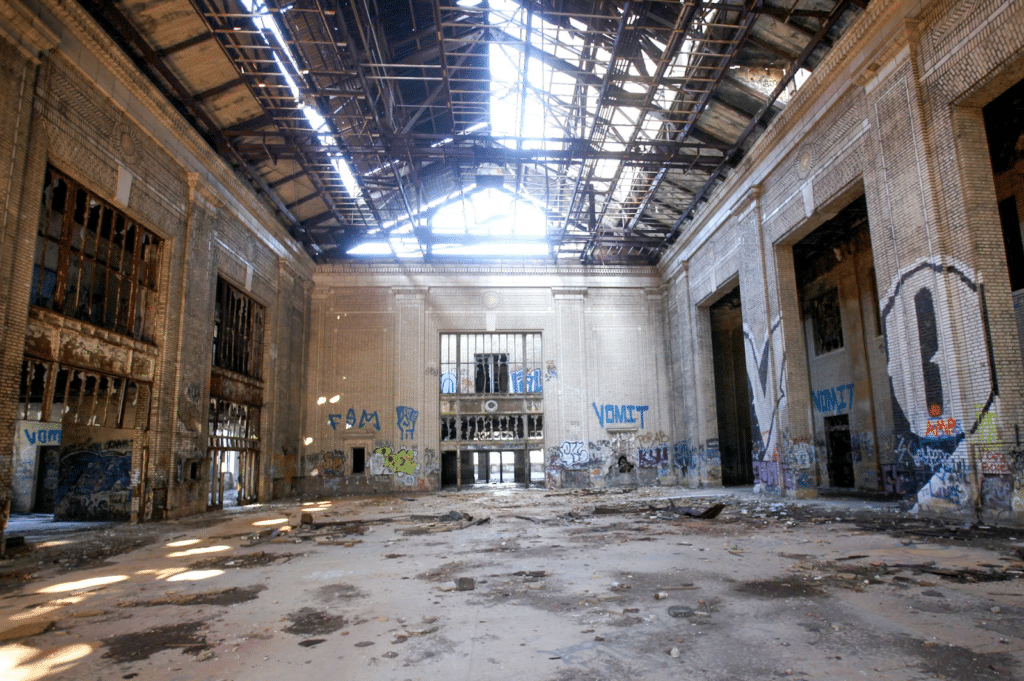
The interior of the Michigan Central Train Depot in 2009, Kate Meda.
With its boarded-up windows and crumbling facade, the once-proud station became a magnet for “ruins photography,” serving as a stark visual metaphor for the city’s economic decline.
Ford Buys Michigan Central
However, in 2018, a new chapter began when Ford Motor Company purchased the building, envisioning a transformation that would breathe new life into the station and the surrounding area.
The Michigan Central project used innovative 3D scanning technology to recreate the intricate details of the 106-year-old station, such as the ornate cast iron windows, decorative trim, and elaborate ceiling tiles. The 3D scanner uses 15 laser crosses to capture the shape of an object, measuring fine details down to the thickness of a human hair.
How did Michigan Central’s renovation blend the craftsmanship of a bygone era with the tech of the 21st century?
“Throughout this project, we used a hybrid approach to restore and replicate original elements. We applied the latest design technology and compatible alternate materials, but we also relied on expert craftsmen including masons and plasterers.
Many of the materials are hand-finished, such as decorative painting to resemble stonework or stained wood. It was exciting to be able to marry cutting-edge processes with heritage craftsmanship to honor the century-old design of this station.”

A Grand Celebration: Michigan Central Reopens
After years of meticulous restoration led by architecture firm Quinn Evans, Michigan Central Station reopened its doors in June 2024. It hosted a grand celebration that featured a televised concert with Detroit’s musical legends. This revitalization marked a turning point for both the station and the city, signaling a renewed sense of hope and a commitment to a brighter future.
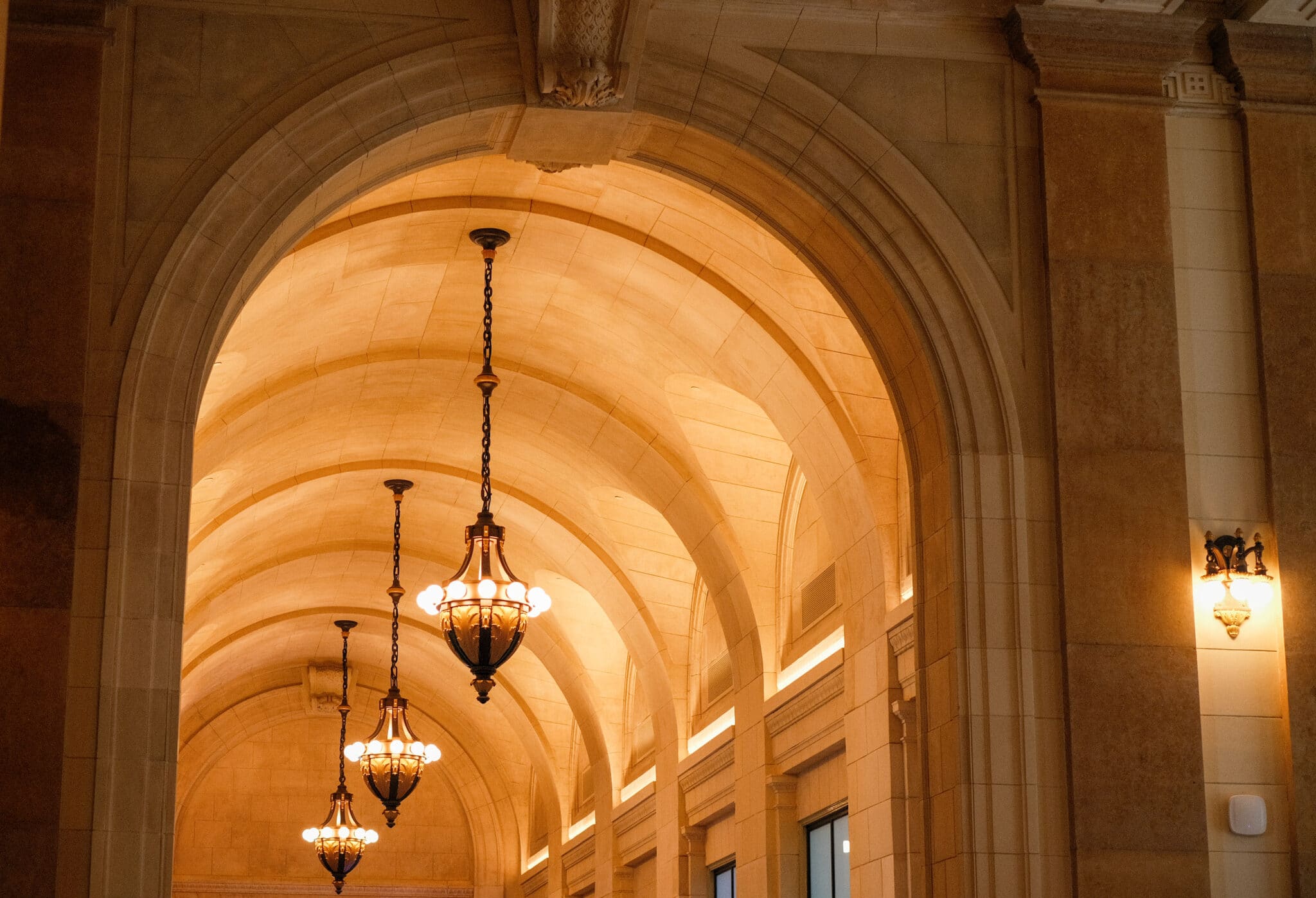
The newly restored Michigan Central Station, Kate Meda, 2024.
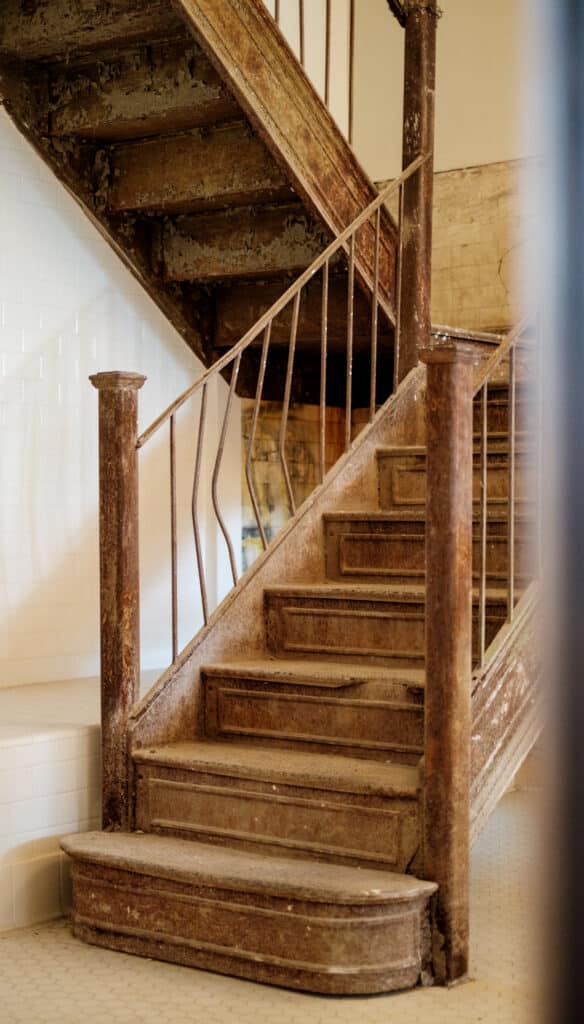
The hidden staircase recovered during the renovation, Kate Meda, 2024.

3D technology was used to model the original details of the train station, including cast iron windows, Kate Meda, 2024.
Although our city faced a period of decline due to factors like the downturn of the auto industry, racial tensions, and suburbanization, the spirit of Detroit never left.
The story of Michigan Central Station mirrors the broader narrative of how Detroit continues to innovate, whether as the home of cast iron stoves, commercial radio, or automobiles.
How does Ford’s Michigan Central project impact the community at large?
“I’m proud to work in a company that invests to improve and provide opportunities to the community around it. Under the leadership of Bill Ford, Ford Motor Company is reshaping Detroit by renovating the old Michigan Central Station and bringing the Motor City back to the title it deserves: Automotive Capital of the World.”

What does Michigan Central’s revitalization mean for Detroit?
“The cornerstone of this project has been a tremendous catalyst, initiating remarkable changes across the entire Michigan Central campus and surrounding neighborhoods. I am thrilled to see the future developments that will arise from this.
The extensive coverage of Detroit’s Renaissance and performances by Detroit stars at the concert (like the first-ever performance of Eminem’s “Houdini”) was unexpected and great to see. The images and concert coverage have been phenomenal, highlighting the project’s impact on the community at large.”

The KORTX Story: The Spirit of Reinvention
Like the leaders of Ford and the Michigan Central project, KORTX sees Detroit as a place of incredible opportunity and technological innovation. Founded in 2014 in Royal Oak, Michigan, KORTX has grown from a bootstrapped startup to a thriving Inc. 5000 company.
In our early years, KORTX focused on building a strong foundation in programmatic advertising, data analytics, and technology solutions. With this approach, we could provide comprehensive digital marketing services to clients across various industries.
Inventing New Technology
We developed our proprietary platform, Axon (now Kampus), early on to address the challenge of data silos in the advertising industry, enabling more personalized and effective campaigns.
As KORTX expanded our services and client base, we also deepened our roots in the Detroit community. We relocated to a larger office space, further solidifying our presence in Metro Detroit.
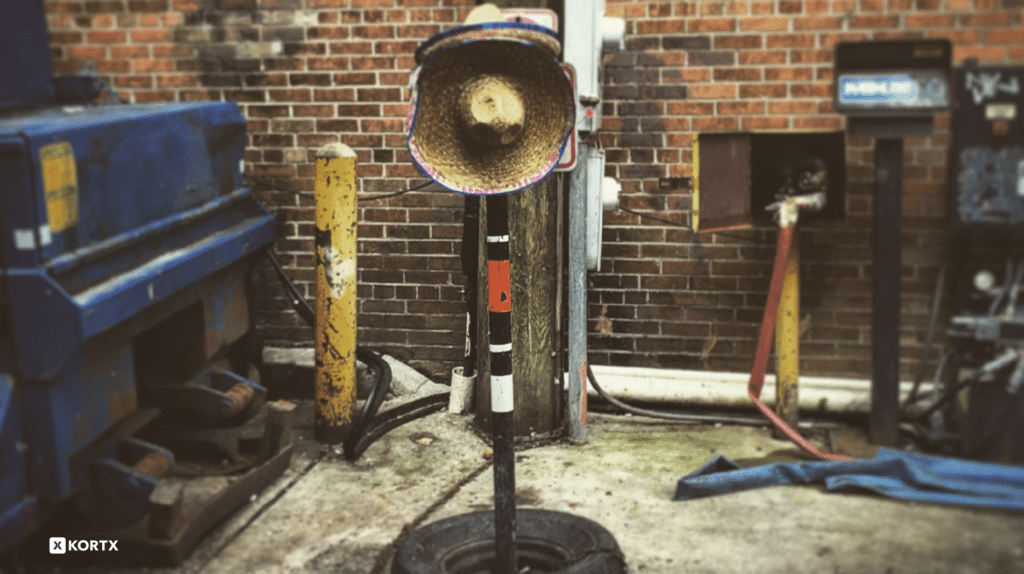
The view from our first office – an alley above a Mexican restaurant and dumpsters.
What inspired you to start KORTX?
“We built KORTX to help advertisers and marketers navigate this complex digital landscape through best-in-class service, programmatic buying, analytics, and technical solutions.
KORTX is a hybrid: part programmatic partner, data and analytics agency, and technology solutions provider. This is the three-legged stool from which the company was founded and those are the core areas we continue to invest in. I’m a strong believer that real digital transformation requires a clear vision, owning data across platforms, and an intimate understanding of how the pieces fit together. Not in theory, but in practice and at scale. KORTX has done the legwork building solutions from the ground up to solve real business problems.”

Supporting Local Restaurants
Our team deepened our community involvement by actively supporting local initiatives, including our commitment to sourcing employee-catered meals from Detroit businesses.

Some of our most frequented Detroit restaurants:
Casa Amado, Green Lantern, and Little Lou’s.
Giving Locally & KORTX Cares
Our KORTX Cares program proudly supports nonprofit organizations in and around Detroit. Each quarter, one team from our company selects a charitable organization they are passionate about to give back to the community that has nurtured our growth.
In Q1 2024, our Account Management team chose Forgotten Harvest, Detroit’s largest food rescue organization based in Oak Park, Michigan.
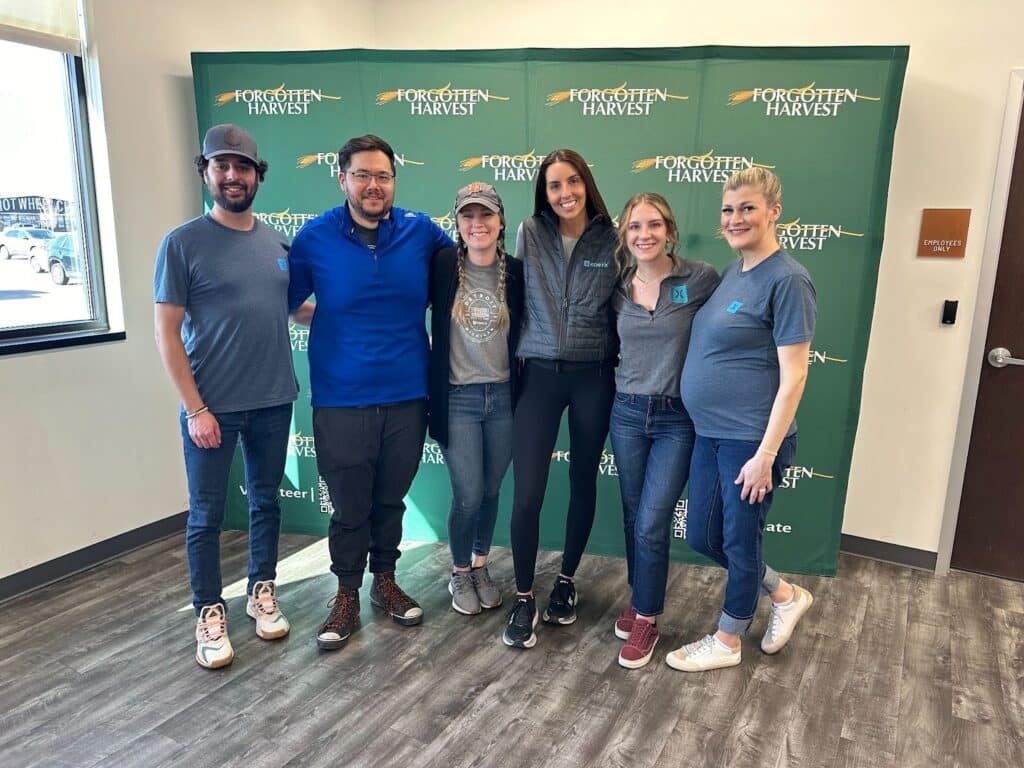
How does KORTX support the Detroit community?
“When planning KORTX events, I’m mindful of supporting local, minority-owned businesses within our community. As we are a minority-owned business, I feel it’s important to highlight others and bring awareness to businesses that our team may not otherwise know about. One of our favorite lunch spots is Breadless in Detroit. Breadless is a Black-Owned restaurant that provides healthy, sustainable, low-carb, 100% gluten-free, and offers halal options, so we can really have a dietary-friendly lunch option for everyone in the office! Not to mention they are so good, you forget you’re eating healthy.”

Hiring to Reflect Diversity
As a minority-owned business, we celebrate our team members’ varied backgrounds, cultures, and perspectives. We are committed to continuously expanding our diverse team, focusing on daily interactions rather than isolated programs to promote diversity.
While our team is geographically diverse across the United States, Detroit holds a special place for many employees who’ve chosen to put down roots and raise their families here.
Why did you stay in the Detroit area and decide to raise your family here?
“My husband and I were both born and raised in the suburbs of Detroit. Now, with two daughters of our own, we’ve chosen to stay in the area where our entire family also resides. We particularly value the strong sense of community, the kindness of the people, and the unique Midwest mentality. All of these things make Michigan an ideal place to raise our children, and the resurgence of Detroit adds to the excitement. At KORTX, we are inspired by the city’s spirit and strive to embody these values in our work each and every day.”

KORTX Through the Years
We had our team members share their favorite KORTX memories in and around Detroit.
The Early Days: 2017
“I really look back at my first year, 2017, and how exciting it was to be growing. Every new deal felt like a huge success. And we faced every single challenge together.”

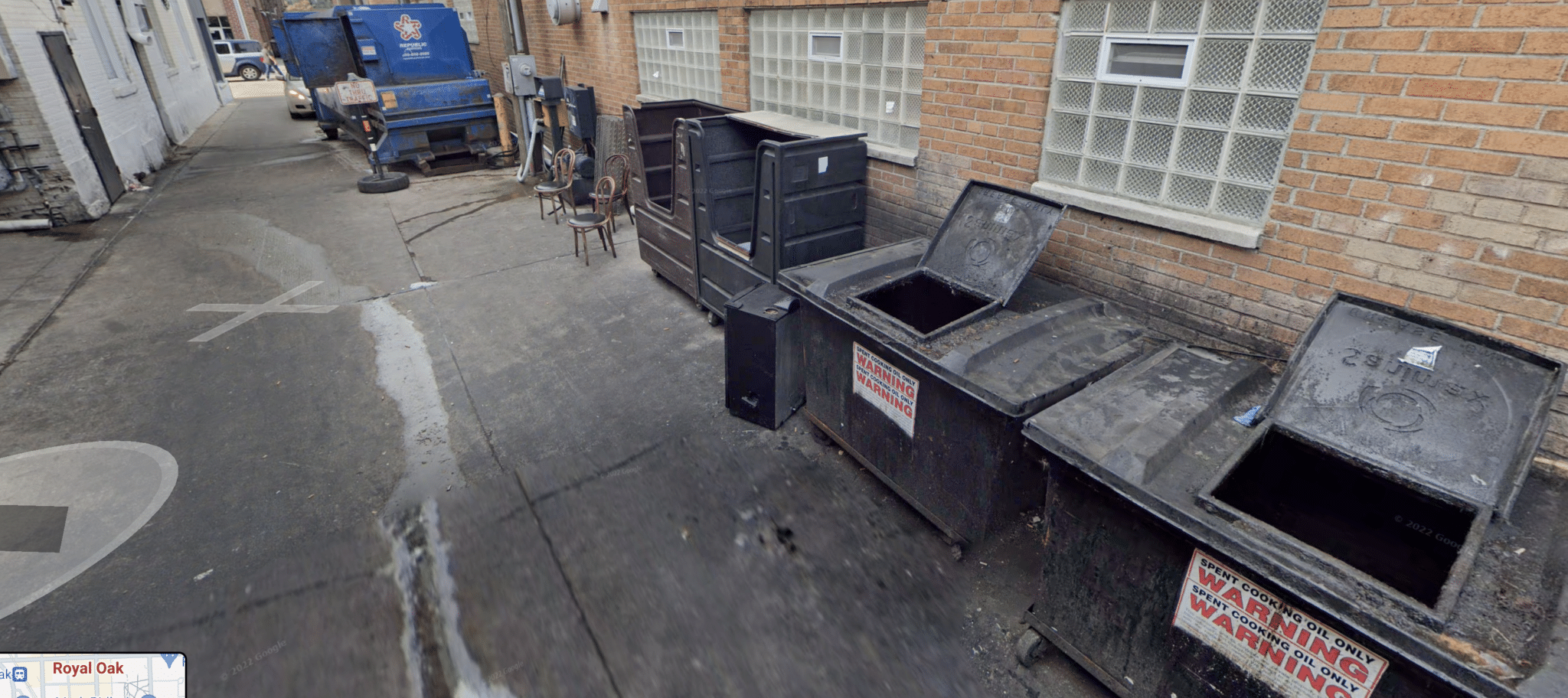
“Our first office. Now that was a character in itself. We squeezed into an office working above a bar in an alley and next to a Mexican restaurant. It was very gritty and really felt like a scrappy start-up. There were only a few of us in the early KORTX days but we all remember the excitement (and the smells emanating from the restaurant dumpsters). That’s my favorite memory from early on.”

Summer Connect 2024: Comerica Park to Cheer on the Detroit Tigers
“As a native Texan, I always jump at the idea of visiting my co-workers in Detroit for work-related activities. My favorite instance so far has been just last week when we all attended a baseball game. Seeing the camaraderie, hearing the roars of cheering and feeling the Detroit sun beam down on my peers and me. It was a great way to spend my day visiting the city.”


“My all-time favorite KORTX event is the Summer Connect Tigers Game in downtown Detroit. Even though I’m not the biggest baseball fan, there is something about team bonding at Comerica Park on a warm summer day with an ice-cold beer (maybe a hotdog too). I remember when I first joined KORTX in 2018, this was my first team off-site downtown. I am so grateful we have kept the tradition alive over the years.”


“Favorite KORTX Memory: Tailgating with the KORTX team at a Michigan football game under the lights at the Big House was a highlight for me.”

Embracing the Spirit of Detroit’s Renaissance
The revitalization of Michigan Central Station symbolizes Detroit’s transformation, reflecting the city’s rich history and promising future.
At KORTX, we embody Detroit’s ethos of hard work and passion. Our team’s diverse skills and backgrounds, much like the city itself, enable us to reassemble, tune, and optimize each data point, delivering uniquely effective solutions. We proudly contribute to Detroit’s continued technological success. Our journey mirrors Detroit’s—grounded in determination, fueled by innovation, and focused on a brighter, more connected future.
About the Author
Kate Meda is a Copywriter at KORTX. She enjoys omitting needless words and making things sound good.

